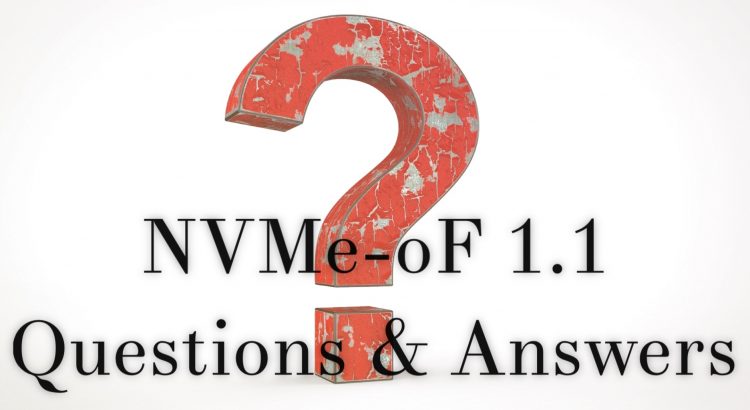
Fibre Channel SAN Hosts and Targets Q&A
At our recent SNIA Networking Storage Forum (NSF) webcast “How Fibre Channel Hosts and Targets Really Communicate” our Fibre Channel (FC) experts explained exactly how Fibre Channel works, starting with the basics on the FC networking stack, link initialization, port types, and flow control, and then dove into the details on host/target logins and host/target IO. It was a great tutorial on Fibre Channel. If you missed it, you can view it on-demand. The audience asked several questions during the live event. Here are answers to them all:
Q. What is the most common problem that we face in the FC protocol?
A. Much the same as any other network protocol, congestion is the most common problem found in FC SANs. It can take a couple of forms including, but not limited to, host oversubscription and “Fan-in/Fan-out” ratios of host ports to storage ports, but it is probably the single largest generator of support cases. Another common problem is the ‘Host cannot see target’ kind of problem.
Read More



 1.1
1.1 As more storage traffic traverses the network, the risk of congestion leading to higher-than-expected latencies and lower-than expected throughput has become common. That’s why the SNIA Networking Storage Forum (NSF) hosted a live webcast earlier this month,
As more storage traffic traverses the network, the risk of congestion leading to higher-than-expected latencies and lower-than expected throughput has become common. That’s why the SNIA Networking Storage Forum (NSF) hosted a live webcast earlier this month,  Last month, the
Last month, the  In the last few years, Ethernet equipment vendors have announced big increases in line speeds, shipping 25, 50, and 100 Gigabits-per -second (Gb/s) speeds and announcing 200/400 Gb/s. At the same time Fibre Channel vendors have launched 32GFC, 64GFC and 128GFC technology while InfiniBand has reached 200Gb/s (called HDR) speed.
But who exactly is asking for these faster new networking speeds, and how will they use them? Are there servers, storage, and applications that can make good use of them? How are these new speeds achieved? Are new types of signaling, cables and transceivers required? How will changes in PCIe standards and bandwidth keep up? And do the faster speeds come with different distance limitations?
In the last few years, Ethernet equipment vendors have announced big increases in line speeds, shipping 25, 50, and 100 Gigabits-per -second (Gb/s) speeds and announcing 200/400 Gb/s. At the same time Fibre Channel vendors have launched 32GFC, 64GFC and 128GFC technology while InfiniBand has reached 200Gb/s (called HDR) speed.
But who exactly is asking for these faster new networking speeds, and how will they use them? Are there servers, storage, and applications that can make good use of them? How are these new speeds achieved? Are new types of signaling, cables and transceivers required? How will changes in PCIe standards and bandwidth keep up? And do the faster speeds come with different distance limitations? 